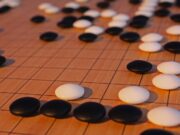This year has had its share of science and technology advances from Army researchers. The U.S. Army CCDC Army Research Laboratory, the Army’s corporate research laboratory, has the mission to discover, innovate and transition science and technology to ensure dominant strategic land power.
The lab’s chief scientist, Dr. Alexander Kott, picked the coolest advances to showcase what Army scientists and engineers are doing to support the Soldier of the future with a top 10 list from 2019:
Number 10: Artificial muscles made from plastic
Future Army robots will be the strongest in the world, if visionary researchers have their way. Robots could be armed with artificial muscles made from plastic.
Army researchers collaborated with a visiting professor from Florida A&M University-Florida State University College of Engineering to study how plastic fibers respond when they are twisted and coiled into a spring. Different stimuli cause the spring to contract and expand, mimicking natural muscles.
The team’s expertise in polymer science and chemical engineering helped to identify optimal material property values to achieve the desired artificial muscle performance targets, and helped develop and implement techniques to measure those material properties.
Artificial muscles could potentially augment robot performance, allowing our future mechanical partners to buff up, and pump more iron.
Number 9: Monitoring Soldier health and performance with biorecognition receptors
Army and academic researchers are looking at how to monitor Soldier health and performance in real-time, by developing unique biorecognition receptors. These future bioreceptors are small, simple to produce, inexpensive, and robust to environmental stresses.
Once integrated into wearable biosensors, data can be selectively captured from a complex mixture of sources in theater, like blood, sweat or saliva.
“The Army will need to be more adaptive, more expeditionary and have a near-zero logistic demand while optimizing individual to squad execution in multifaceted operational environments,” said Dr. Matt Coppock, chemist and team lead. “It can be envisioned that real-time health and performance monitoring, as well as sensing current and emerging environmental threats, could be a key set of tools to make this possible.”
The Army of the future may use these wearable sensors to monitor environmental biothreats and health diagnostics, all with great benefits to the Soldier. Chemical Reviews published this research (see Related Links below).
Number 8: A water-based, fire-proof battery
Army researchers and their partners at the University of Maryland and Johns Hopkins Applied Physics Laboratory have developed a new, water-based and fire-proof battery.
“Our project addresses the risk by allowing high-energy or high-power batteries to be put on the Soldier with no risk of the batteries catching on fire,” said Dr. Arthur von Wald Cresce, an Army materials engineer. “We’re hoping that by designing safety into the battery, this concern goes away and Soldiers can use their batteries as they please.”
These aqueous lithium-ion batteries replace the highly flammable electrolyte in lithium-ion batteries, using a nonflammable, water-based solvent–and also using a lithium salt that is not heat-sensitive, allowing for batteries to be stored and used at a much broader range of temperatures.
Cresce and the team first collaborated with scientists at the University of Maryland to study the properties of a new class of aqueous electrolytes known as water-in-salt electrolytes and published their findings in the journal Science (see Related Links below).
Number 7: Generating power on-demand with hydrogen
Imagine if you could generate power on-demand, using just a tablet and some water.
Army researchers are exploring potential applications for a structurally-stable, aluminum-based nanogalvonic alloy that reacts with any water-based liquid to produce on-demand hydrogen–generating power without a catalyst.
“Imagine a squad of future Soldiers on a long-range patrol far from base with dead batteries and a desperate need to fire up their radio,” said Dr. Kris Darling, Army materials scientist. “One of the Soldiers reaches for a metal tablet and drops it into a container and adds water or some fluid that contains water such as urine, immediately the tablet dissolves and hydrogen is released into a fuel cell, providing instant power for the radio.”
Number 6: 3-D printing ultra-strong steel
A team of Army researchers have developed a way to 3-D print ultra-strong metal parts, by adapting an alloy originally developed by the Air Force into powder form.
With a method called Powder Bed Fusion, a 3-D printer’s laser selectively melts the powder into a pattern. The printer then coats the build plate with additional layers of powder until the part is complete.
The end result is a piece of steel that feels like it was forged traditionally, but has intricate design features that no mold could create, and is about 50% stronger than anything commercially available.
“I think it’s going to really revolutionize logistics,” said Dr. Brandon McWilliams, an Army team lead. “Additive manufacturing is going to have a huge impact on sustainment…instead of worrying about carrying a whole truckload, or convoys loads of spares, as long as you have raw materials and a printer, you can potentially make anything you need.”
Researchers say this capability has the potential to replace parts of today’s tanks, or support future, state-of-the-art systems.
Number 5: Human interest detector
Have you ever wanted to get inside a Soldier’s head? Army researchers have developed a human interest detector that can determine where people are looking and decode their brain activity.
By monitoring brainwaves, researchers track neural responses and assess what captures a Soldier’s attention among a myriad of stimuli in threat environments.
Researchers say this will lead to better situational awareness on the battlefield, enable commanders to make better decisions and ultimately improve the ability of the Soldier to team with future AI agents.
Number 4: AI to identify fuel-efficient materials
A new system of algorithmic bots could tackle the most complex challenges beyond human experimental capabilities.
Building on amazing successes in artificial intelligence, which can even win a game like Jeopardy, Army-funded researchers at Cornell University developed a system called CRYSTAL to explore new materials for long-lasting power for Soldiers. CRYSTAL relies on a collective of algorithmic bots that sift through hundreds of thousands of combinations and elements–a number so vast that it’s inaccessible through traditional experimentation.
The system is able to obey the laws of physics and chemistry–where existing machine learning approaches fail–and could identify the next generation of material breakthroughs that will equip Soldiers on the future battlefield.
“The exciting part about basic science research is you can’t always predict where the results will lead,” said Dr. Purush Iyer, division chief, network sciences at Army Research Office. “We funded this research to better understand collective intelligence (wisdom of crowds). While material science application, such as design of novel alloys, were always on the cards, the serendipitous nature of the eventual outcome, that of a catalyst to aid in designing better fuel cells, is solving a problem of immense importance for the Army–battery power in the field–shows the importance of investing in basic research.”
The Materials Research Society Communications published an article (see Related Links below).
Number 3: Robotic arrays for directional communication
An Army team has developed a new way to send directional radio signals in physically complex environments. The team designed small robotic platforms with compact, low frequency antennas and AI to create a system which adaptively self-organizes into a directional antenna array.
Although multi-directional radiation is not possible in low-frequency, this array is configured to emit an omni-directional radiation pattern, creating a directional link on-demand.
A robot with a compact, low-frequency antenna coordinates with other robotic teammates having passive unpowered antennas which help focus the electromagnetic field in a desired direction. Add more robots and the array becomes more focused and has increased range and reliability.
This enables robust and targeted wireless communication at increased ranges through buildings and in challenging urban and subterranean environments.
Number 2: Self-healing material
Imagine a synthetic material that could heal itself when damaged.
Army researchers and their partners at Texas A&M have developed a reversible cross-linking epoxy that is 3-D-printable and is self-healing at room temperature without any additional stimulus or healing agent. The unique chemistry of the material even enables it to be programmed to morph shape when stimulated with temperature.
Army researchers are exploring whether these materials could create reconfigurable Army platforms of the future that could morph shapes on-demand.
Number 1: Soldier-robot teams
How do you train a robot how to think in unknown scenarios–when you don’t know what the future battlefield will look like, and you have no control to modify the environment to meet the robot’s abilities?
Army researchers have been developing new algorithms and capabilities that are unseen in industry–enabling autonomous agents such as robots to operate in these unknown environments such as future battlefields.
These algorithms are creating the brain of robots, to equip them to interact with unforeseen objects and in unknown scenarios, ultimately preparing them to partner with Soldiers on the future battlefield, whatever it might look like.


































